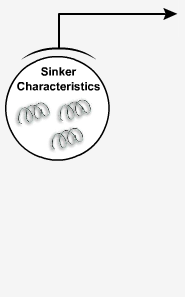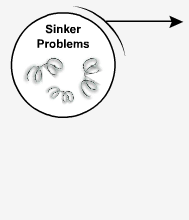Testing Novel Dosage Forms and Non-Compendial Modifications
to Dissolution Apparatus: Apparatus 2 Sinkers
- Overview:
Sinkers Other Forms Characteristics Disadvantages
In Apparatus 2, the dosage form is allowed to sink to the bottom of the vessel before the blade begins rotation. However, some dosage forms may be too light and will require a 'weight' (sinker) to enable them to sink. This may be accomplished by winding a few turns of a short, loose piece of wire, made of a suitably non-reactive material, around the dosage form to form a helix.
Alternative sinker devices may be required during method development. However, the performance of the various sinkers is generally not equivalent and the sinkers are not interchangeable unless validated.

Dosage forms which require sinkers are not solely limited to capsules that do not sink. Any dosage form that exhibits the following characteristics may require a sinker to obtain the best dissolution results.

Sinkers should exhibit a number of desirable characteristics including the following:

There are a number of disadvantages associated with the use of sinkers which may have far-reaching implications during dissolution testing. These include the points shown below.
All these problems will result in an unacceptable variation in dissolution performance.


